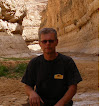02.07.2013 – 03.07.2013,
The Journey: Puno – Rachi – Cusco (385 km),
Rachi archaeological complex is located in Cusco - Puno highway and consists of many different parts. First - Temple of Wiracocha, from which is only 20 meters high wall has preserved and as to the adjacent columns - there is only a meter high part left.


The guide shows pictures of what this temple could look like in the past.

And the image of the whole complex, The Wiracocha templis up on the left, beneath that is the residential quarter, and under that round storehouses.

Here was the residential site.

And these round 8-10 meters in diameter walls were once warehouses, (Colca, or Qolcas), more than 100 buildings.

Some warehouses have been restored, and one has got a roof. Round storage facilities are unique because circular buildings were usually not built by Incas.
Cusco is a city of 400 thousand inhabitants and somehow bigger than I first imagined. Incas arrived at the area of Cusco in the 13th century, and made it the capital of their empire, but the place had been inhabited already earlier.

Some observations about the traffic of Peru and of all of South America. The traffic in town is normal, other road users are accepted and actually taken into consideration. And that is nice.

In my GPS I had quite a decent map of Cusco, only on the direct path that led to the camping there were some stairs, and so this route had to be canceled. And I was not the only one who in this narrow street had to make a U-turn at the end.

Back through the town, and finally the right place was found. Camping Quinta Lala, The main overnight place of overlanders in Cusco.
The under-roof place was not occupied. The place is perfectly ok, here's clients kitchen, wifi, the downtown is a 15 minute walk, and there is an opportunity to exchange impressions with other overlanders. Like – the best places to overnight, the most exiting or best or whatever prefered routes etc.

About in a 5 minutes walk is Sacsayhuaman, a great complex of Pre- Inca times.

In the middle of the complex there ars three rows of walls. Here is one copy- paste about the material http://www.world-mysteries.com/mpl_9.htm
Some authors believe that the three walls represent the three levels of the Andean Religious World: beginning from the bottom would be the Ukju Pacha (underground stage), the Kay Pacha (earth's surface stage) in the middle, and the Hanan Pacha (sky stage) on the top.
Besides; those levels are identified with their three sacred animals: the Amaru or Mach'aqway (snake), the Puma (Cougar or Mountain Lion), and the Kuntur (Andean condor). Because of the zigzagging shape of the walls, some authors suggest that they represented the Illapa god (thunder, lightning and thunderbolt).
It is possible that all the previous elements related to their religion would not be excluding, because there are divine interactions, and as it is known "three" was a key number among Quechuas.
There are no other walls like these. They are different from Stonehenge, different from the Pyramids of the Egyptians and the Maya, different from any of the other ancient monolithic stone-works.

Some of the building blocks weigh up to 140 tons. The stones are so well -cut that even a sheet of paper cannot be squeezed in between them. And the walls have survived earthquakes, and after the earthquake the walls do not fall over or break into pieces but the rocks will fall back to their original positions.


Further Reading http://en.wikipedia.org/wiki/Saksaywaman


From distance a magnificent view of the old town of Cusco.

Cusco, during the Inca Empire the central square was bigger and bore the name of Huacaypata. The current name of the Plaza de Armas Squares was given to the place by the conqueror of the Inca state Francisco Pizarro in 1532.
Further on the Cusco Cathedral.


In the middle of the square there is a high monument. Pachacuteq - the ninth Sapa Inca - who lived from 1438 - 1472, and whose conquests grew Kingdom of Cusco into Inka empire.

Cusco. Roadway and on the right - railway. Cusco is the only city in Peru, that has the Narrow Gauge (914 mm) than the standard gauge (1,435 mm) railway.

Church of Santo Domingo.
Practical info –In Cusco one can buy a 10 days valid " tourist ticket " - Boleto Turistico del Cusco – Boleto Turistico Del Cusco (http://www.boletoturisticocusco.net/)The list is long enough - Museum of Art and Santa Catalina Monastery, Municipal Museum of Contemporary Art, Regional Historical Museum, Koricancha Site Museum, Folk Art Museum, Qosqo Native Art Center (folkloric Dances), Monument Pachacuteq, Saqsaywaman, Kenko, Pukapukara, Tambomachay, Tipon, Pikillacta, Pachacuteq Lookout.

Further more : Pisac, Ollantaytambo, Chinchero. The ticket can be purchased list of the places, and the price is 130 Soli (about 35 EUR)

On the other side of the ticket the map of Cusco is a great help to find the interesting places easily.
And yet it is stated that this is not a ticket to visit Machu Picchu. To make a visit to Machu Picchu there is a number of different options, and about that in the next post.



No comments:
Post a Comment